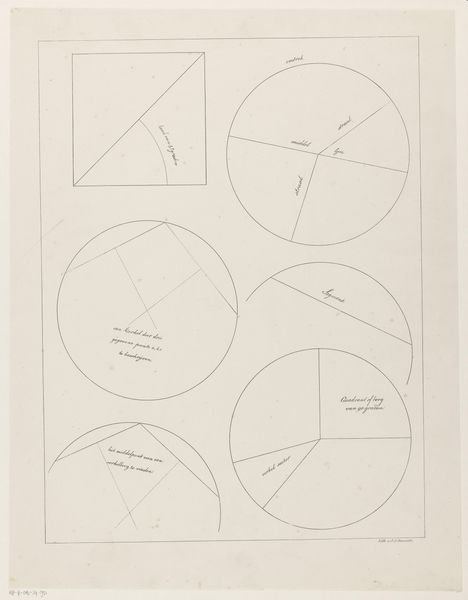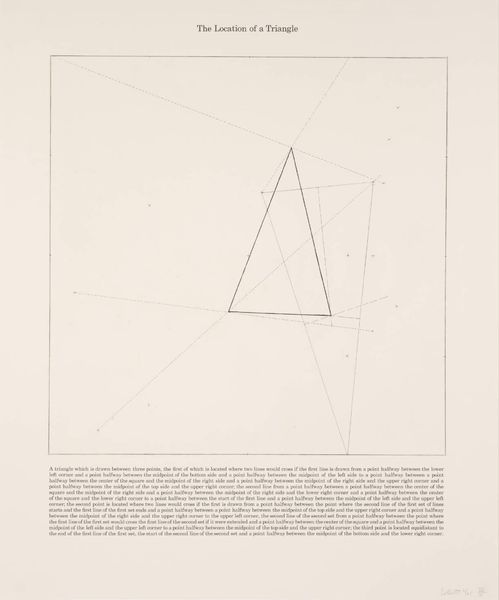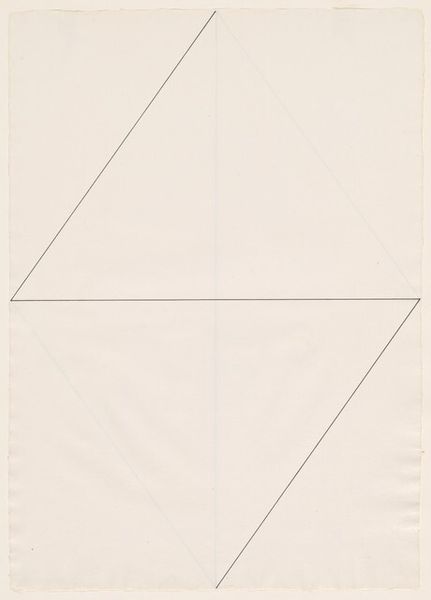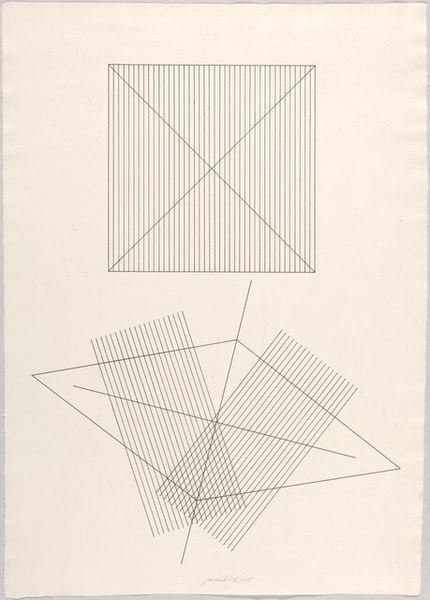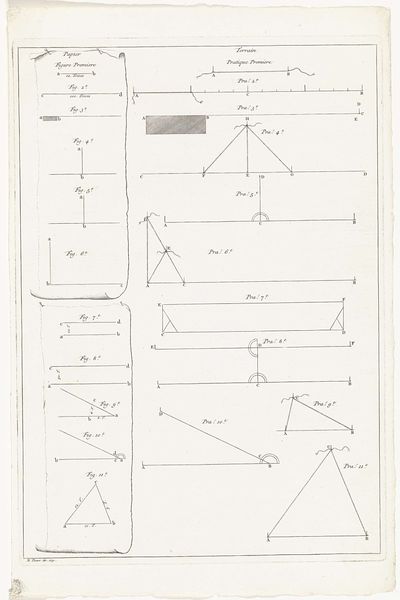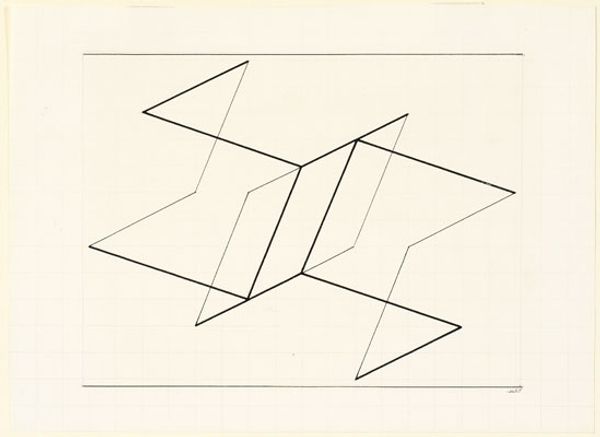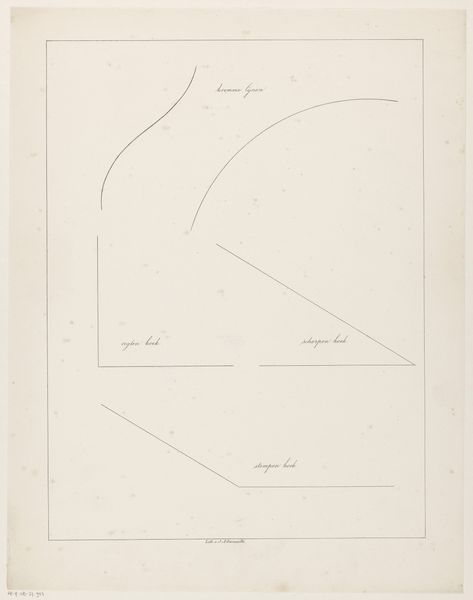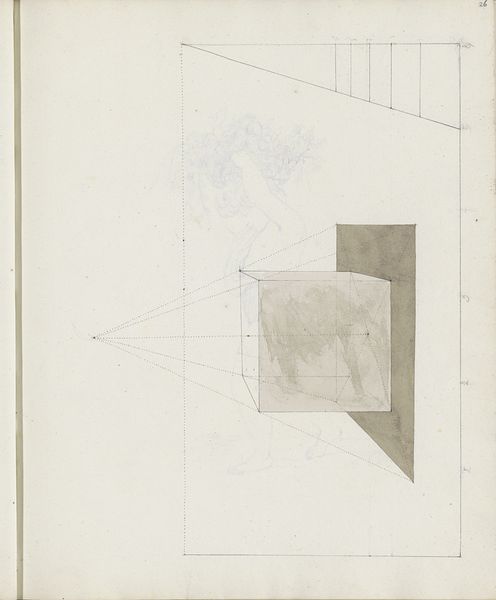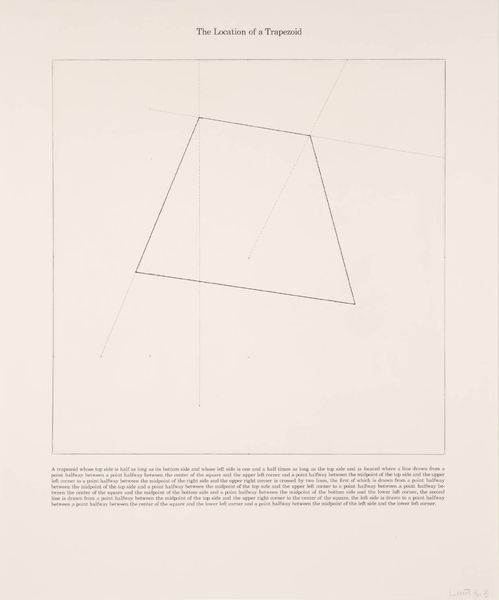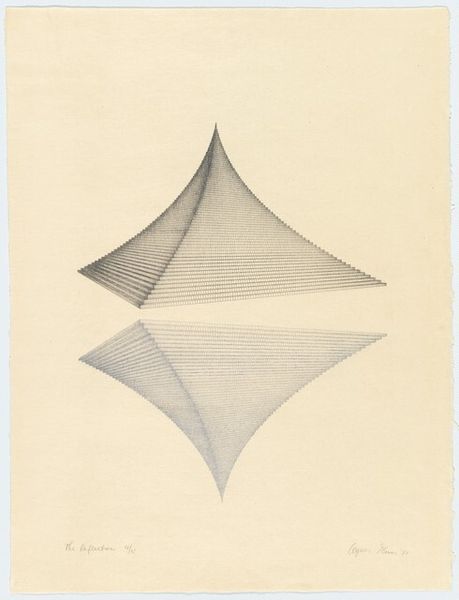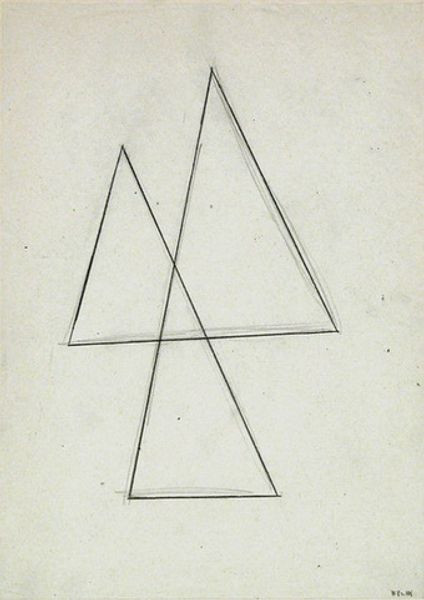
drawing
#
drawing
#
geometric
#
geometric-abstraction
#
line
#
academic-art
Dimensions: height 545 mm, width 425 mm
Copyright: Rijks Museum: Open Domain
Jean Augustin Daiwaille's "Zes driehoeken" presents us with six triangles, rendered in clean lines, each labeled with precision. But let's not dismiss these as mere geometric exercises. The triangle, a shape as old as human thought itself, carries weighty symbolic meaning across cultures. Think of the pyramids, eternal symbols of aspiration and divine connection. Or consider the Christian Trinity, often represented through triangular forms to symbolize the indivisible unity of Father, Son, and Holy Spirit. Even in the Kabbalistic Tree of Life, triangles denote higher triads of spiritual concepts. The emotional weight of this simple shape stems from its ability to encapsulate complex ideas of ascension, stability, and harmony. Daiwaille’s triangles, devoid of overt symbolism, become vessels for our subconscious projection, echoing through time and bearing the echoes of collective memory.
Comments
No comments
Be the first to comment and join the conversation on the ultimate creative platform.
